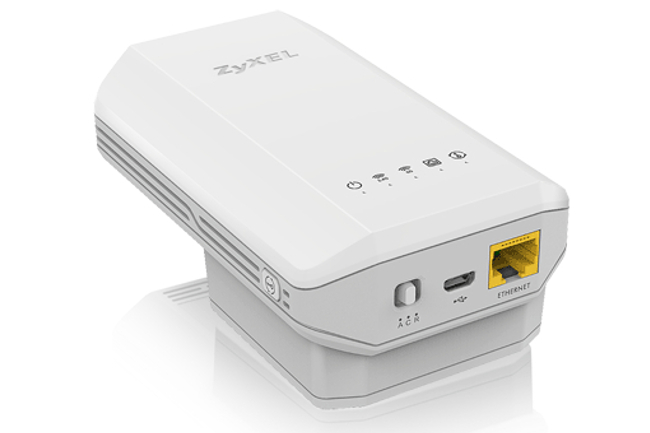
For consumers who aren’t familiar with wireless range extenders, they are stand-alone devices that connect to a network’s current wired/wireless router. A typical range extender grabs the router’s signals and rebroadcasts them to parts of the home or office that are beyond the originating router’s reach, filling in the annoying dead zones. This is cheaper than purchasing a second wireless router, and doesn’t use an additional gateway.
MU-MIMO is short for “multi-user multiple-input multiple-output.” This technology is different than what’s used in traditional wireless routers in that it’s not limited to communicating with one device at a time. This is why processor speeds are important: They enable traditional routers to send/receive data to/from multiple devices via each external antenna so quickly that the devices appear to be streaming simultaneously. But when too many devices are hogging data at the same time, the processor is bogged down, which results in connectivity issues like buffering.
MU-MIMO is different in that it can directly beam data to connected devices through individual streams instead of devices having to wait their turn to send or receive data. That means devices aren’t sharing the same data stream, leading to more fluid, uninterrupted streaming. Of course, there’s still a potential that the processor can get bogged down due to how many devices are streaming and downloading simultaneously, but the combination of MU-MIMO and the latest processor technologies should lessen the burden on the range extender.
Here are the brief specs of Zyxel’s new wireless range extender:
| Model: | WRE6606 |
| Wireless standard: | 802.11 b/g/n/ac |
| Device class: | AC1300 MU-MIMO |
| 2.4GHz maximum speed: | Up to 400 megabits per second |
| 5.0GHz maximum speed: | Up to 867 megabits per second |
| Wireless security: | 64/128-bit WEP. WPA-PSK, WPA2-PSK |
| Ports: | 1x gigabit Ethernet 1x Micro USB for power only |
The extender can be powered two ways: by plugging it directly into a wall’s electrical outlet, or by connecting a power source to the Micro USB port. Unlike the typical networking router, the extender’s overall size is quite small so that it’s somewhat out of sight. Presumably the Micro USB aspect means the device can be powered by a charging port in a desktop or laptop, or a power strip if an empty electrical socket in the wall isn’t available.
Zyxel’s new range extender includes a physical switch on the bottom that toggles between three operational modes. The first is “Access Point Mode” for adding wireless connectivity to a router that doesn’t already provide wireless connections. The second is the “Extender Mode” for grabbing a router’s signals and tossing them into dead zones. Finally, the extender has a “Client Mode” for adding MU-MIMO wireless connectivity to a wired device, like a desktop, laptop, or HDTV.
Finally, the new range extender includes “boost” modes for three specific scenarios. The first one is called “Range Boost” for getting the maximum amount of coverage throughout the house or office. There’s also “Speed Boost” that focuses on wireless performance for video streaming and online gaming, and “Normal Mode” for an optimized balance between coverage and performance.
Zyxel customers can purchase the WRE6606 wireless range extender for $70 through the company’s authorized online and offline retail partners. As of this publication, the extender was not available online through Amazon, Best Buy, or Newegg, so check back soon.


